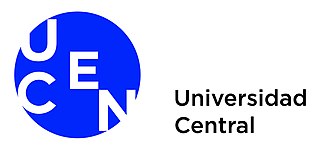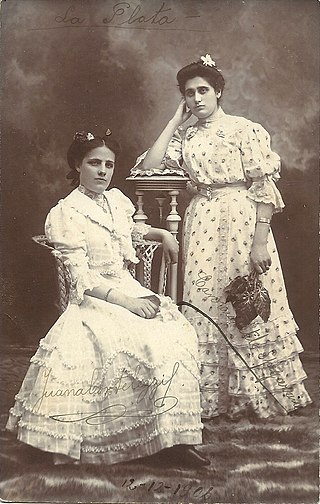
La Plata is the capital city of Buenos Aires Province, Argentina. According to the 2022 census, it has a population of 772,618 and its metropolitan area, the Greater La Plata, has 938,287 inhabitants. It is located 9 kilometers inland from the southern shore of the Río de la Plata estuary.

The University of Santiago, Chile (Usach) is one of the oldest public universities in Chile. The institution was born as Escuela de Artes y Oficios in 1849 by Ignacy Domeyko, under the government of Manuel Bulnes. It became Universidad Técnica del Estado in 1947, with various campuses throughout the country. In 1981, as a consequence of a reform on higher education under the dictatorship of Augusto Pinochet, it became what is now known as Universidad de Santiago de Chile, with all activities centered in a single 340,000 m2 campus in the capital Santiago.
Universidad de las Américas Puebla, commonly known as UDLAP, is a Mexican private university located in San Andrés Cholula, near Puebla. The university is known for its programs in Finance, Arts and Humanities, Social sciences, Science and Engineering, and Business and Economics. It is considered to be one of the most prestigious universities in Latin America, having been ranked the best private and single-campus university in Mexico by the newspaper El Universal, as well as being one of the only seven universities in Latin America accredited by the Southern Association of Colleges and Schools. The UDLAP has also been very successful in Mexican collegiate sports; their teams are the Aztecas.

The National Technological University is a country-wide national university in Argentina, and considered to be among the top engineering schools in the country. Hosting over 85,000 students, its student body is comparable to Argentina's third-largest university and exceeded significantly only by the University of Buenos Aires (UBA). It has 29 semi-independent branches of various sizes located all over the country.

The La Plata National University is a national public research university located in the city of La Plata, capital of Buenos Aires Province, Argentina. It has over 90,000 regular students, 10,000 teaching staff, 17 departments and 106 available degrees.

The National University of Cuyo is the largest center of higher education in the province of Mendoza, Argentina.

The National Atomic Energy Commission is the Argentine government agency in charge of nuclear energy research and development.

The National University of Tucumán is an Argentine national university located in Tucumán Province and the largest in Argentina's northwest region. Founded on 25 May 1914 in San Miguel de Tucumán, access to the university is unrestricted and free of charge.
The Central American Technological University (Spanish: Universidad Tecnológica Centroamericana) (UNITEC) is a private coeducational institution with campuses in the three main cities of Honduras: Tegucigalpa, San Pedro Sula and La Ceiba.

Clorindo Manuel José Testa was an Italian-Argentine architect and artist.

EAFIT University is a private Colombian university located in Medellín offering 23 undergraduate programs, 70 specializations, 34 masters, and six doctoral programs. The university offers degrees in various disciplines through its schools of Management, Engineering, Law, Finance and Economics, Science, and Humanities. Universidad EAFIT was approved by the Colombian Ministry of Education on May 6, 1971. It has three additional branches in Bogotá, Pereira, and Rionegro.

The National University of Mar del Plata is an Argentine national university in the city of Mar del Plata, on the Atlantic coast.

Universidad Central de Chile, abbreviated as UCEN, is the first autonomous private university in Chile, founded in 1982 in Santiago de Chile. It's accredited in the areas of institutional management and undergraduate teaching by the National Accreditation Commission of Chile for a term of four years from December 2017 to December 2021.
The Federal Rural University of the Semi-arid Region, mostly known as UFERSA, in Brazil, was created on August 1, 2005, by Law No 11.155, which transformed the Superior School of Agronomy of Mossoró (ESAM) into a Federal University. ESAM was a municipal Higher Education Institution created on April 18, 1967, by Decree No 03/67 and incorporated to the federal educational system as a Governmental agency under special regime by Decree No 1036, on October 21, 1969. Nowadays, UFERSA has reached a 4 general index course (IGC), according to the Brazilian Ministry of Education.

Juana Cortelezzi (1887-1973) was an Argentine scientist and professor, with outstanding performance in the area of mineralogy. She is recognized for being the first woman to reach the position of full professor at the National University of La Plata and for her contributions in teaching geology.












